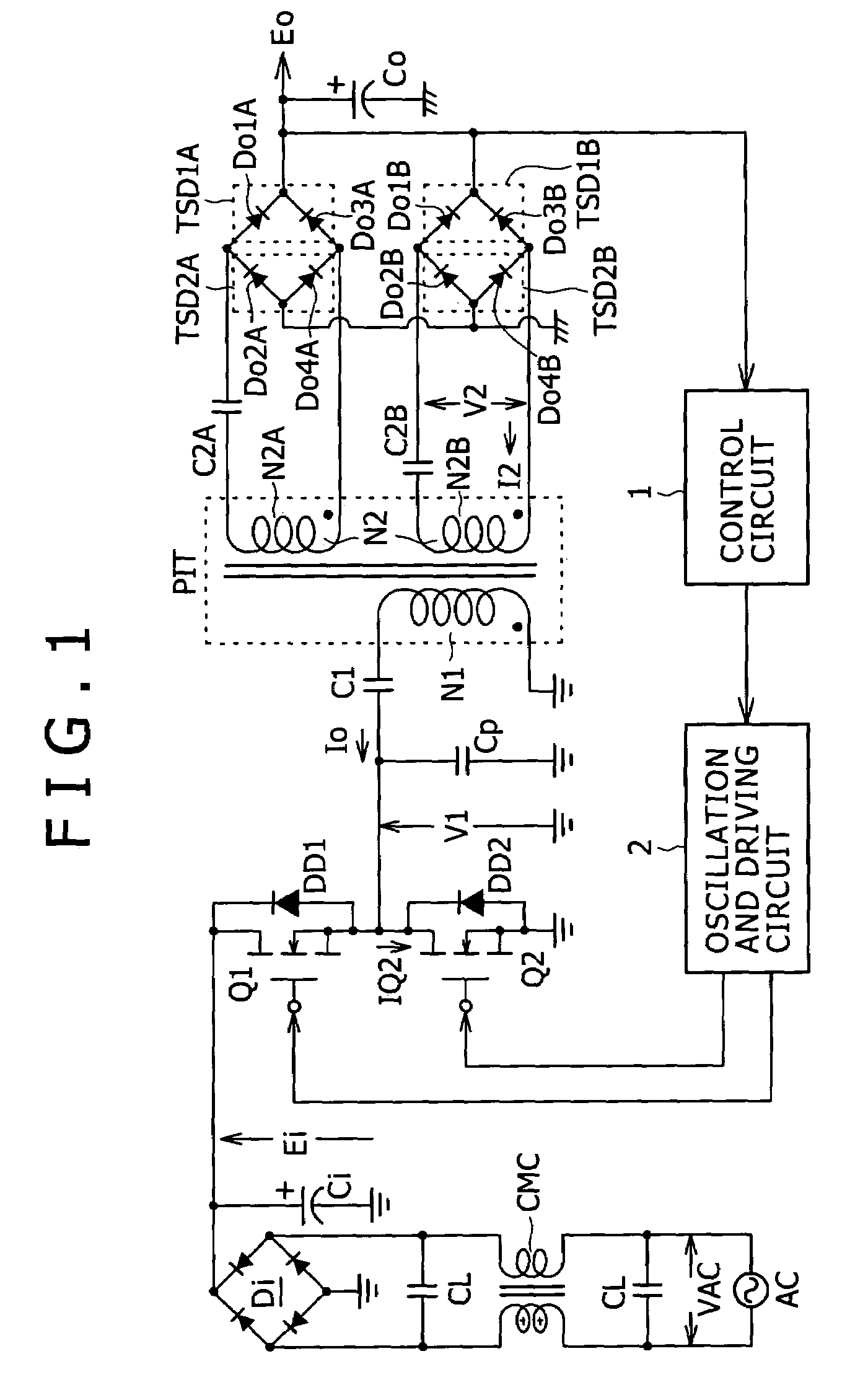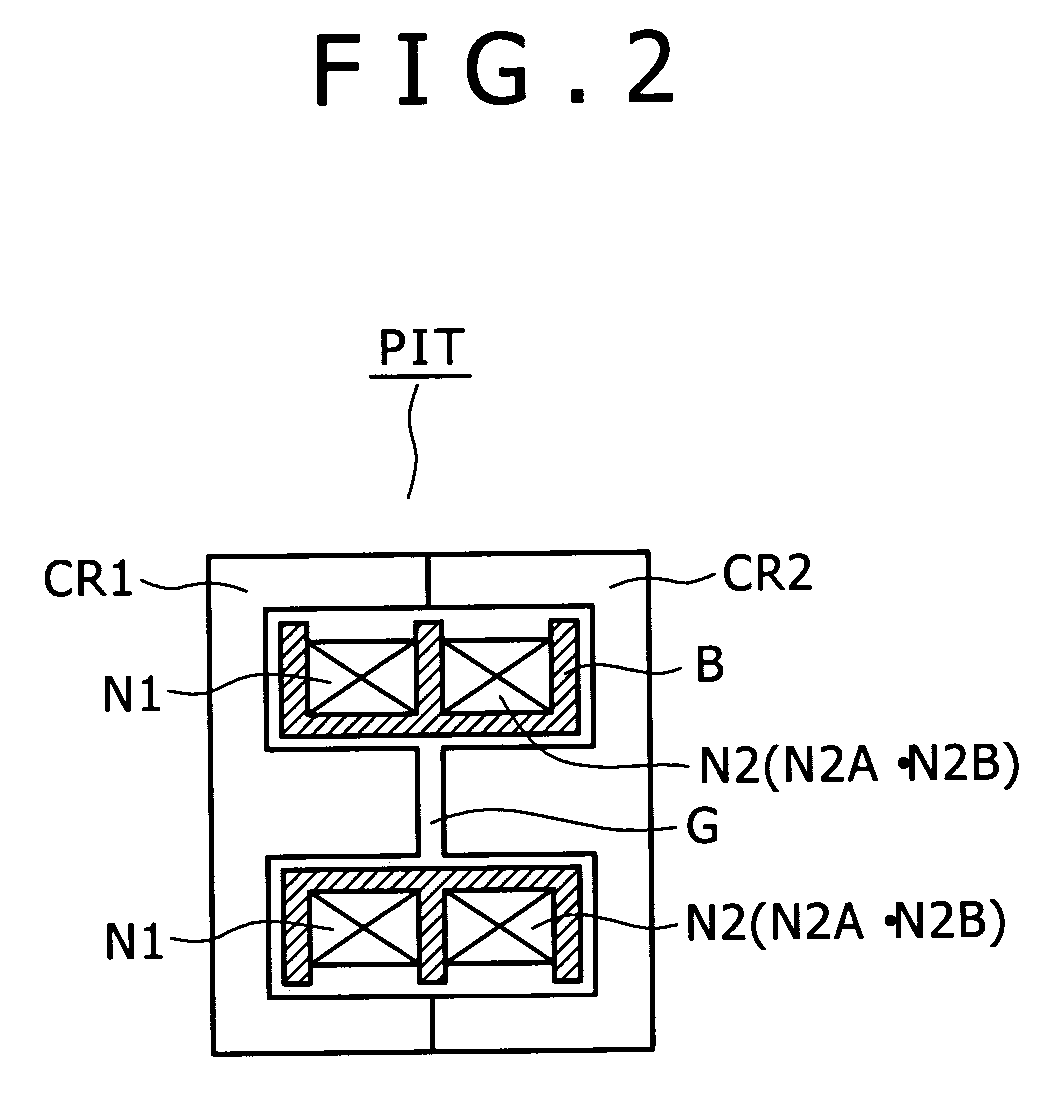Switching power supply circuit
a power supply circuit and switching technology, applied in the direction of electric variable regulation, process and machine control, instruments, etc., can solve the problems of increasing the number of components, the upper limit of the driving frequency for which the switching driving circuit is ready is approximately 200 khz, and the inability to use the switching driving circuit practically as an actual power supply circuit, etc., to achieve the effect of reducing the control range of the switching frequency, enhancing the responsibility for constant voltage control, and high degree of reliability
- Summary
- Abstract
- Description
- Claims
- Application Information
AI Technical Summary
Benefits of technology
Problems solved by technology
Method used
Image
Examples
first embodiment
[0104]The power supply circuit of the present first embodiment has a configuration ready for the wide range by which it operates with both of commercial AC power supply inputs of the AC 100 V type and the AC 200 V type. Further, as regards the applicable load power, the power supply circuit is ready for a variation range of the load power Po, for example, from Po=approximately 150 W to 0 W (no load). Also in this instance, an secondary side DC output voltage Eo of, for example, approximately 25 V is obtained similarly as in the case of the circuit described hereinabove with reference to FIG. 14.
[0105]In particular, in the power supply circuit shown in FIG. 1, a common mode noise filter is formed from a pair of filter capacitors CL and a common mode choke coil CMC for a commercial AC power supply AC.
[0106]A full-wave rectification smoothing circuit is connected to the commercial AC power supply AC at the next stage to the noise filter. The full wave rectification smoothing circuit is...
second embodiment
[0285]It is to be noted that the pertaining elements of the power supply circuit of the second embodiment shown in FIG. 11 were selectively set in the following manner:[0286]insulating converter transformer PIT: gap G=1.6 mm, coupling coefficient k=0.65[0287]primary winding N1=42 T[0288]secondary winding N2A=N2A1+N2A2=2 T+2 T=4 T[0289]secondary winding N2B=N2B1+N2B2=2 T+2 T=4 T[0290]primary side series resonance capacitor C1=0.033 μF[0291]secondary side series resonance capacitor C2A1=C2A2=C2B1=C2B2=1.0 μF
[0292]In short, also in the second embodiment, in order to set the coupling coefficient k to k=approximately 0.65, for example, a gap length of approximately 1.6 mm is set for the gap G formed in the inner magnetic leg of the core of the insulating converter transformer PIT of the structure shown in FIG. 2 similarly as in the power supply circuit of the first embodiment shown in FIG. 1.
[0293]This achieves a configuration ready for the wide range.
[0294]Further, by such setting of th...
PUM
 Login to View More
Login to View More Abstract
Description
Claims
Application Information
 Login to View More
Login to View More - R&D
- Intellectual Property
- Life Sciences
- Materials
- Tech Scout
- Unparalleled Data Quality
- Higher Quality Content
- 60% Fewer Hallucinations
Browse by: Latest US Patents, China's latest patents, Technical Efficacy Thesaurus, Application Domain, Technology Topic, Popular Technical Reports.
© 2025 PatSnap. All rights reserved.Legal|Privacy policy|Modern Slavery Act Transparency Statement|Sitemap|About US| Contact US: help@patsnap.com



